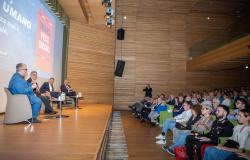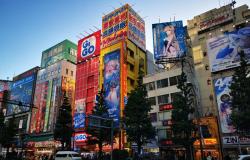L’contemporary Asian art, the same one that failed to emerge in the Nineties, crushed as it was by many other trends coming from the West, today finds itself on the crest of the wave. Collectors and museums all over the world are competing to grab works and pieces that were literally ignored until recently. Chinese, Japanese, Koreans, Indians, Indonesians and many other artists from emerging Asia: their works, the vast majority of which are ignored in our latitudes, are reaching prices very high due to one request continually growing.
It is no coincidence that in the last twenty years the value of auction sales of this type of art has increased 25 times, reaching 2.3 billion dollars (as of June 2023). An example? A satirical painting by the Chinese artist Fang Lijunpurchased in 1996 for 89 thousand dollars from the Asian Art Museum in Fukuoka, Japan, is now valued at just under 7 million dollars. The work, which represents the faces of dozens of stylized men with similar smiles and which symbolizes the social situation in China, is a powerful reflection of the times, as well as testimony to the complete affirmation of contemporary Asian art.
Contemporary art is reborn in Asia
Fueling this golden market we find a combination made up of young artists talented Asians and equally young collectors and patrons children of the economic miracle of the new Asia. The dynamics that allowed this particular phenomenon is not difficult to explain. First of all, collectors and patrons, i.e. those who direct demand and fuel prices through purchases, have diverted attention towards a more diversified range of artists and subjects. Result: traditional Western artistic values were thus combined with trends made in Asia.
At the same time, the economies of Asian countries have developed, allowing many people – including artists – to study abroad and incorporate fashions, styles and avant-gardes. In Asia, on the one hand, groups of rich scions eager to invest everywhere – including the artistic world – on the other hand, hosts of young artists happy to express their sensibilities, merging their cultural backgrounds with what they learned during their stays away from home.
Do you want to receive our newsletters?
In short, while i Asian patrons 2.0, mostly millennials and Generation Z, are dominating the global art scene by spending rivers of money and reshaping the type of art collected, new artists take center stage. They are the ones who dictate the “rules” of the market.
Patronage 2.0
According to the Art Basel & UBS Survey of Global Collecting 2023, the average spend on art and antiques by high-net-worth millennials in Asia was $59,785while members of the aforementioned Generation Z spent approximately 56 thousand dollarsi, in these same sectors, only in the first half of 2023. Both categories are diversifying their respective portfolios, moving away from more classic preferences. Millennials, for example, are attracted to sculptures, installations, photography and film or video art; “Gen Zers” instead show a strong inclination towards digital art and prints.
Amid these changes, auction companies aim to capture demand from across Asia. It is not a case that Sotheby’s will relocate and expand its operations in Hong Kong by September 2024. At the country level, the China represented the 32% of global auction sales through last June, moving closer to the United States, the largest market for contemporary art. The Japan represents less than 2% of the contemporary art market, but its potential is undeniable. The turnover of the Japanese art auction SBI reached 5.2 billion yen in 2023, more than tenfold from a decade earlier, with 60% of bidders aged 40 or younger. Meanwhile, from Vietnam to Indonesia, other Asian countries are ready to step forward.
Give us one more minute of your time!
If you liked the article you just read, ask yourself: if I hadn’t read it here, could I have read it elsewhere? If there was no InsideOver, how many wars forgotten by the media would remain so? How many reflections on the world around you couldn’t you do? We work every day to provide you with quality reports and insights completely free of charge. But the type of journalism we do is anything but “cheap”. If you think we are worth encouraging and supporting, do it now.





